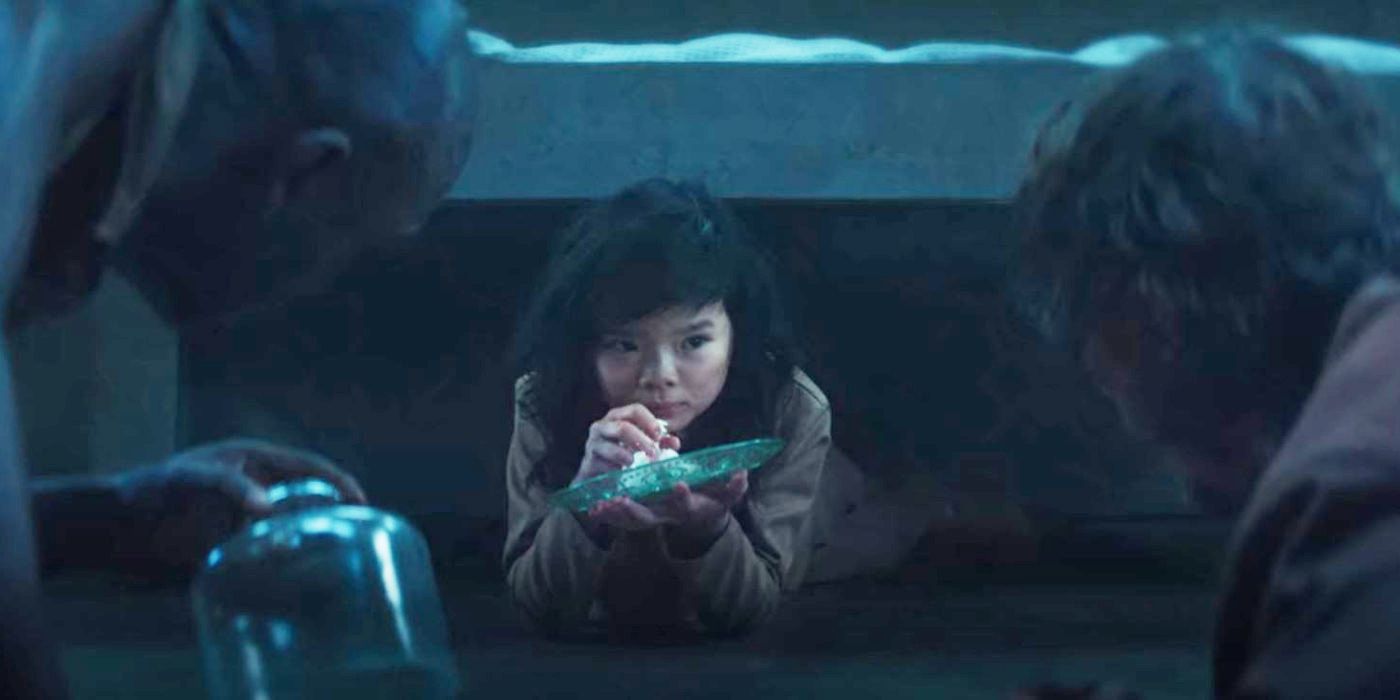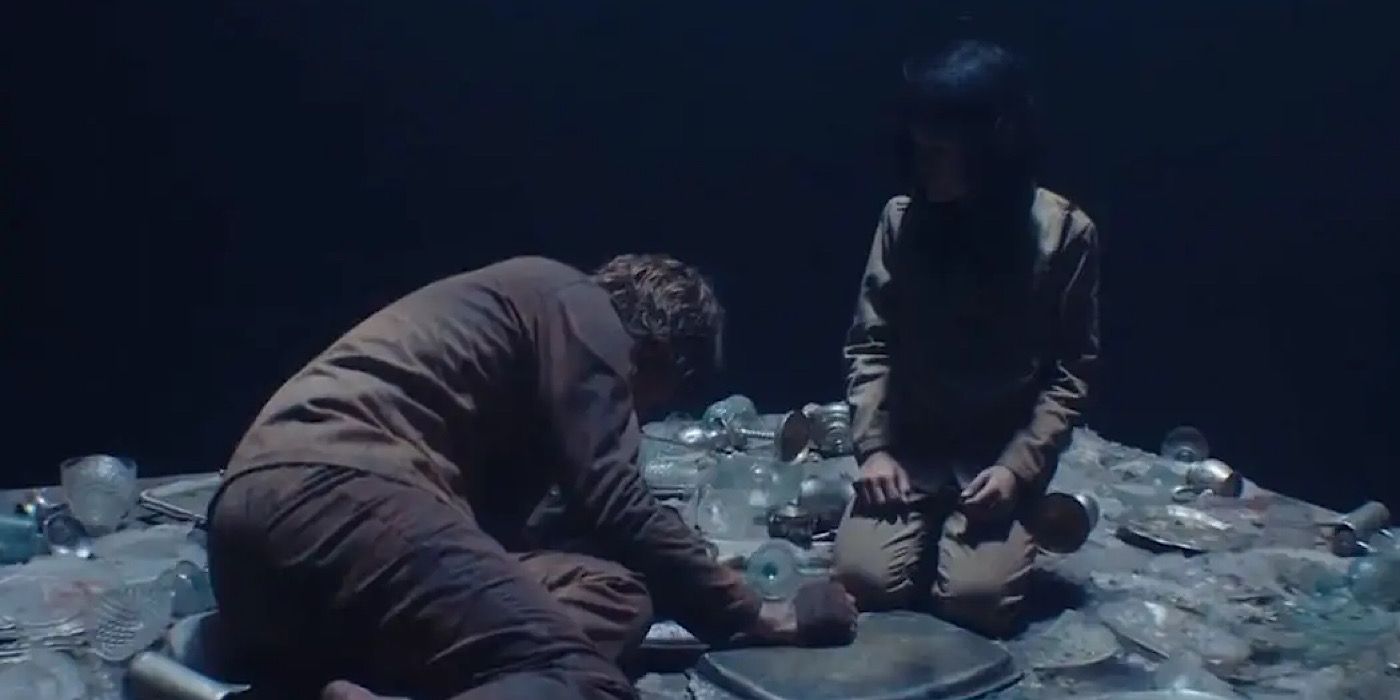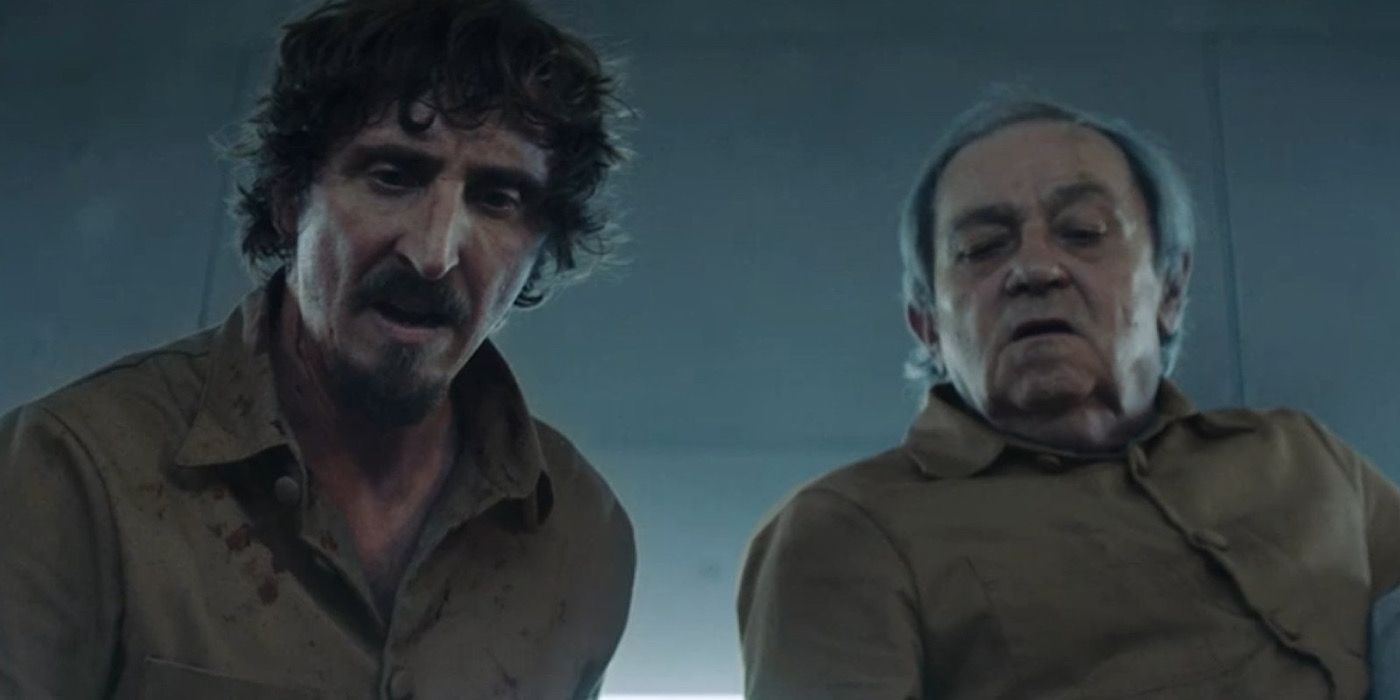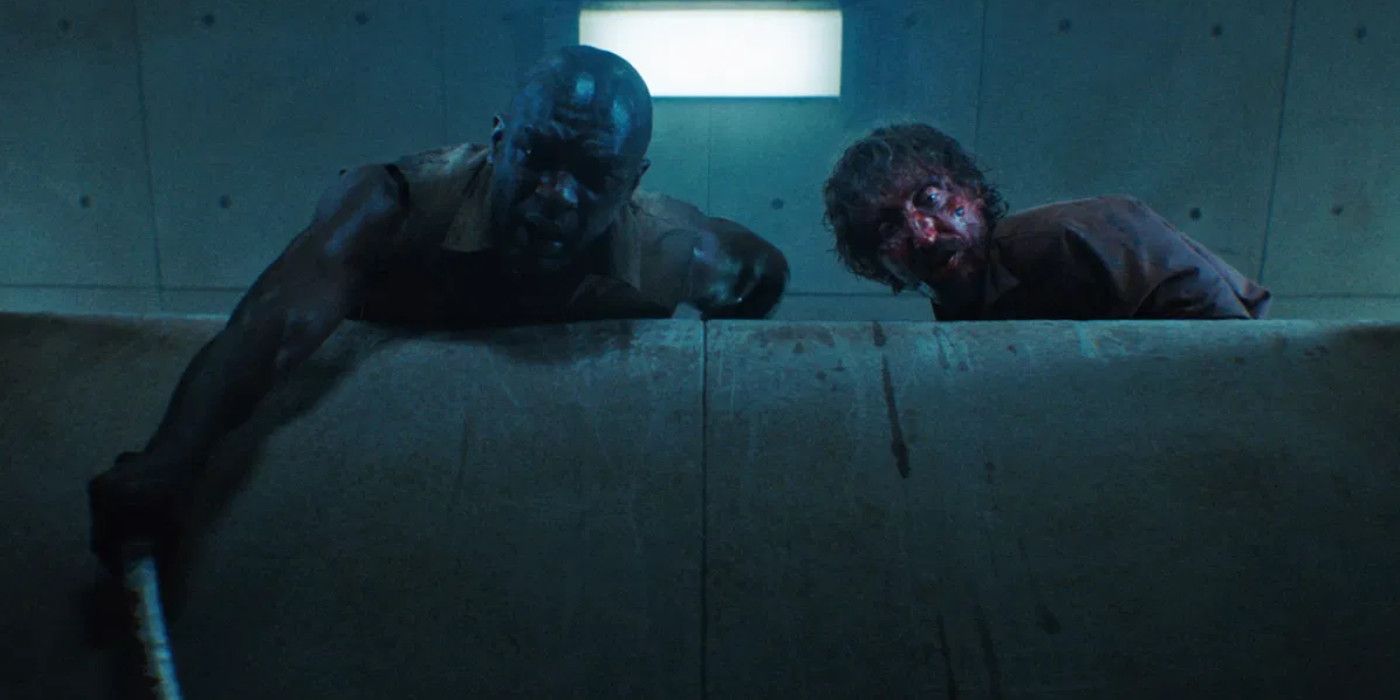The Platform ending explained why the main character believed one child offered hope for the future, so much so that he would sacrifice his own life to ensure she lived to carry on the message. Released in 2019, the Spanish dystopian thriller by director Galder Gaztelu-Urrutia tells the story of a large industrial tower used to house people convicted of committing crimes. However, this entire structure is inhumane as the prisoners switch floors monthly and are fed by a moving platform with food on it.
This means that by the time the platform reaches the lower levels, the food is usually already gone, so those at the bottom will likely starve, which leads to conflict among the prisoners. Prisoners have cannibalized each other to survive in the past, and others have accepted the situation, knowing that this is the way they live their lives now. However, when two prisoners learn there might be a child in the Platform tower, they set out to learn the truth and, in the end, believe they have found hope for the future.
How The Platform Ends
The Dying Goreng Saves A Child
The Platform tells the story of a man named Goreng, who wakes up in a cell on level 48 of the prison tower. He learns more about the situation from his cellmate, Trimagasi, and how the food is rationed. The two also see a woman named Miharu, who rides down the platform searching for her child, someone no one believes exists in this tower. Miharu later rescues Goreng from a cannibalistic Trimagasi, whom Goreng kills in self-defense. He also meets a woman named Imoguiri, who was once an administrator. She also says there are no children in the tower.
This leads to Goreng getting a second cellmate in Baharat. The two ride the food platform down the levels to ration the food, killing prisoners who refuse to cooperate. When they almost reach the bottom, they come across Miharu again, but she ends up dying, and both men are injured. Their ultimate goal is to leave a single panna cotta uneaten as a message. However, when they reach Level 333, they find the child, and Goreng gives her the panna cotta, saving her life so she can ascend aboard the platform before Goreng finally dies.
What “The Girl Is The Message” Means
The Girl Proves There Is Hope For The Prisoners
When Goreng and Baharat were descending on the platform, their goal was to send a message to the rest of the tower that the levels could ration the food fairly, improve the prison, and beat the system by leaving the panna cotta uneaten, with Baharat continuously repeating, “the panna cotta is the message.” Their thought is that if the people preparing the food on the top floor see that the prisoners left something this delicious uneaten, it might be symbolic of their protest.
However, after Baharat dies from his injuries and before Goreng succumbs to his, he realizes there is a bigger message when he reaches the bottom — Level 333. The girl had survived on the bottom floor with almost no food. Goreng, knowing he is dying, allows the girl to eat the panna cotta and sends her back up on the platform by herself.
Sharing food with the child should allow her to remember their kindness and lead the next generation.
He realized that leaving food uneaten was a good message to foster fair rationing, but a better message is that the girl at the bottom was starving, and leaving the food for her was the humane and kind thing to do. “The girl is the message” reminds everyone on the floors above her of their humanity. When the little girl reaches the top floor, it might send an even stronger message. Also, sharing food with the child should allow her to remember their kindness and lead the next generation into a better future.
What The Platform Director Said The Ending
Galder Gaztelu-Urrutia Believes Goreng Died Before “Finding” The Child
The second movie shows that the “message” might not matter. It also indicates, tragically, that the little girl might not even exist at all. Director Galder Gaztelu-Urrutia hints at this in an interview after the first movie’s release (via Digital Spy):
“To me, that lowest level doesn’t exist… Goreng is ᴅᴇᴀᴅ before he arrives, and that’s just his interpretation of what he felt he had to do… As soon as Goreng and Baharat try out socialism to convince the other prisoners to willingly share their food, they end up killing half of the people they set out to help.”
This leads to some interesting discussions about the movie’s themes, the portrayal of socialism in these situations, and the darkness of what is happening in the prison tower. If the child in The Platform didn’t exist anywhere but in Goreng’s mind, then the children in the prequel also didn’t exist, and this structure and society are destroying the minds of everyone confined within its walls.
The Real Meaning Of The Platform Ending
It Is Impossible To Change The Future, But We Should Still Try
The Platform is, at its heart, a critique of capitalism and its damaging effects on society as a whole. If the tower itself is a microcosm of the capitalistic world in general, the people on the top floors have all that they could want to eat and live heartily. However, those at the bottom rung of the ladder have nothing and are left to starve and die. When people try to find a way to force people to share, it is often seen as a socialist experiment and is shut down, often with violence and death.
However, the end of The Platform is the idea that, even in death, a person with good intentions can see hope for the future. If Goreng did find the little girl and fed her the remaining dessert before sending her as the message, he had achieved what he set out to do, hoping that the future would be brighter for those who came after him. However, if he died, and this was all in his dying fantasies, nothing he did would change anything, and the plight of the poor and desolate would never change, making The Platform a bleak tragedy.
The Alternate Ending To The Platform, Explained
The Child Reached The Top In An Alternate Ending
Interestingly, The Platform ending was supposed to be very different. Galder Gaztelu-Urrutia revealed, “Ultimately, I wanted it to be open to interpretation, whether the plan worked and the higher-ups even care about the people in the pit. We actually did film a different ending of the girl arriving at the first level, but we took it out of the movie. I’ll leave what happens to your imagination.” This ending would have changed everything.
The director prefers the viewers to decide if the girl is enough.
As Gaztelu-Urrutia said, he believes that Goreng was ᴅᴇᴀᴅ when he reached the bottom, meaning the child was part of his dying hallucinations. However, if the alternate ending had shown her reaching the first level, that meant it wasn’t a hallucination; she was real, and Goreng’s sacrifice might have paid off. The director prefers the viewers to decide if the girl is enough: “It’s about the limits of your own solidarity and how easy it is to be a good person when you’re comfortably in level 10, but how hard it is to do so when at level 182.”
How The Platform 2 Followed Up On The Story
The Platform 2 Was A Stealth Prequel
The Platform 2 was a tricky movie because it seemed like a sequel to the original, but it turned out to be a prequel set a year before the events of the original movie. In this film, a woman named Perempuan tries to escape the prison tower, and she fakes her death so that the maintenance will remove her. However, before she escapes, she sees a young boy being placed on Level 333. In a scene that parallels the end of the first movie, she saves the boy and sends him to safety before dying.
Other prisoners carry Perempuan away and say the boy will get “another chance” as he goes up the platform, just like the girl from the first movie. This still raises the big question: Are these kids real, placed in the lowest level of the prison by the management to test the morals of the prisoners seeking redemption? The other theory is that there are no kids and that Perempuan, just like Goreng in The Platform, hallucinated the child as she died, believing she had done something noble but ultimately changing nothing.

.png)








